Pike Robert, Neal Bill. Corporate finance and investment: decisions and strategy
Подождите немного. Документ загружается.


.
Chapter 19 Does capital structure really matter? 515
Table 19.1
Key definitions in
capital structure
analysis
overall market value of the whole company
value of the shareholders’ stake in the company
market value of the company’s outstanding borrowings
book value of borrowings (generally assumed equal to its market value)
rate of return required by shareholders
rate of return required by providers of debt capital
overall (weighted average) cost of capital
coupon rate on debt
interest charges (i.e. payments to lenders, based on book value)
so that
net operating income
It should be stressed that we are assuming no retention of earnings, i.e.
and hence no growth, and, for the moment, no taxes on corporate
profits.
The value of equity in an all-equity firm is:
The value of a geared firm making interest payments of iB is:
The value of the whole firm in either case is:
V
o
V
S
V
B
V
S
1E iB2
k
e
V
S
D
k
e
E
k
e
D1dividends2 E,
1NOI2 1iB k
e
V
S
2 annualE
payments to shareholders 1E iB2,k
e
V
S
annualiB
thei
thek
o
thek
d
thek
e
theB
theV
B
theV
S
theV
o
■ MM’s assumptions
The MM thesis did not go unchallenged. Much criticism of MM’s analysis stemmed from
failure to understand positive scientific methodology. Their analysis attempted to isolate
the critical variables affecting firm value under the restrictive conditions of a perfect capi-
tal market. This provided a systematic basis for examining how imperfections in real
world markets could influence the links between value and risk. The key assumptions are:
■ All investors are price-takers, i.e. no individual can influence market prices by the
scale of his or her transactions.
■ All market participants, firms and investors, can lend or borrow at the same risk-
free rate.
■ There are neither personal nor corporate income taxes.
■ There are no brokerage or other transactions charges.
■ Investors are all rational wealth-seekers.
■ Firms can be grouped into ‘homogeneous risk classes’, such that the market seeks
the same return from all member firms in each group.
■ Investors formulate similar expectations about future company earnings. These are
described by a normal probability distribution.
■ The assets of an insolvent firm can be sold at full market values.
19.3 MM’S PROPOSITIONS
MM’s analysis was presented as three propositions, the first being the crucial one.
■ Proposition I
The central proposition is that a firm’s WACC is independent of its debt/equity ratio, and
equal to the cost of capital that the firm would have with no gearing in its capital structure.
CFAI_C19.QXD 10/26/05 5:22 PM Page 515

.
516 Part V Strategic financial decisions
In other words, the appropriate capitalisation rate for a firm is the rate applied by the
market to an ungeared company in the relevant risk category, i.e. that company’s cost
of equity. The arbitrage mechanism will operate to equalise the values of any two com-
panies whose values are temporarily out of line with each other. The example of
Nogear plc and Higear plc will illustrate this.
Nogear plc and Higear plc
Nogear plc is ungeared, financed by 5 million shares, while Higear plc’s Balance
Sheet shows million debt, interest payable at 10 per cent, and 4 million shares.
Higear’s debt/equity ratio is thus per cent, at book values. The two
firms are identical in every other respect, including their business risks and levels of
annual expected earnings (E) of million. The market requires a return of 20 per cent
for ungeared streams of equity income of this risk.
Imagine that, temporarily, the market value of Nogear is million and that of Higear
is million. Higear’s equity is thus valued by the market at (Its
debt/equity ratio expressed in terms of market values is thus per cent.)
These market values correspond to respective share prices of
for Nogear and for Higear.
The different share values conform to the traditional relationship at relatively low
gearing ratios. Higear has a greater value presumably due to its gearing. Also, it
appears that Nogear is undervalued by the market since, at a required return of 20
per cent, its value should be
MM argue that such imbalances can only be temporary and the benefit obtained by
Higear for its shareholders is largely illusory. It will pay investors to sell their holdings in
the overvalued company and buy stakes in the undervalued one. Specifically, sharehold-
ers can achieve a higher return by selling holdings in Higear, and simultaneously, repli-
cate its gearing (MM call this ’home-made gearing’) and achieve a higher overall return.
This process of arbitrage will force up the value of Higear and lower Nogear’s value, until
their values are equalised. There is thus little point in a firm borrowing to gear-up its cap-
ital structure when investors can achieve the same benefits by acting independently.
Home-made gearing
Consider the case of an investor with a 1 per cent equity stake in Higear. At present, this
stake is worth attracting an income of 1 per cent of
( million less interest payments of ), i.e. This
investor could realise his or her holdings for and duplicate Higear’s debt/equity
ratio of 20 per cent by borrowing at 10 per cent and investing the total stake of
in Nogear shares. This would buy of Nogear’s equity, to
yield a dividend of Personal interest commitments amount
to for a net return of
£14,000. Clearly, it would pay all investors to undertake this arbitrage exercise, thus
pushing down the value of Higear and pushing up the value of Nogear until there was
no further scope to exploit such gains. This point would be reached when the market val-
ues of the two companies were equal and when each offered the appropriate 20 per cent
return required by the market:
At this equilibrium relationship, the price of each company’s shares is For
Nogear, the calculation is while for Higear, the relevant fig-
ures are divided by In an MM world, there are no
prolonged benefits from gearing, and any short-term discrepancies between geared and other-
wise identical ungeared companies quickly evaporate. As a result, MM concluded that both
company value and the overall required return, are independent of capital structure.k
o
,
4 m shares £1.1£5 m £1 m debt2
1£5 m>5 m shares2 £1,
£1.
Value of Nogear Value of Higear
E
k
e
£1 m
0.2
£5 m
1£15,000 £1,0002110% borrowings of £10,0002 £1,000,
11.5% £1 m2 £15,000.
1£60,000>£4 m2 1.5%£60,000
£10,000
£50,000
11% £900,0002 £9,000.10% £1 m£1
11 per cent of £5 m2 £50,000,
1£1 m>0.22 £5 m.
1£5 m>4 m shares2 £1.25
1£4 m>5 m shares2 80p
£1 m>£5 m 20
1£6 m £1 m2 £5 m.£6
£4
£1
1£1 m>£4 m2 25
£1£1
£1
’home-made gearing’
Where an investor borrows to
arbitrage between two identi-
cal but differently-valued
assets
CFAI_C19.QXD 10/26/05 5:22 PM Page 516
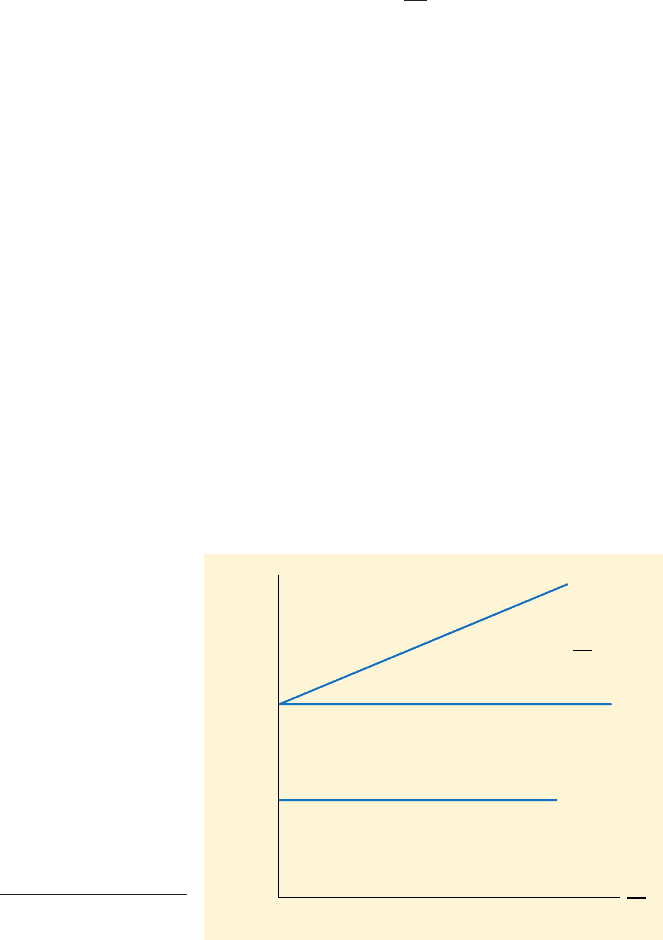
.
Chapter 19 Does capital structure really matter? 517
In reality, not all of the conditions required to support the arbitrage process may
apply, suggesting that any observed benefits may derive from imperfections in the cap-
ital market. Moreover, if gearing does result in higher company value, there must have
been a wealth transfer, since nothing has occurred to alter the fundamental wealth-
creating properties of the company.
■ Proposition II: the behaviour of the cost of equity
Underpinning Proposition I is a statement about the behaviour of the relevant cost of
capital concepts – in particular, the rate of return required by shareholders. This is
expressed in MM’s second proposition which states ‘the expected yield of a share of equity
is equal to the appropriate capitalisation rate, for a pure equity stream in the class, plus a pre-
mium related to the financial risk equal to the debt/equity ratio times the spread between and
This proposition can be expressed as:
where and denote the returns required by the shareholders of a geared company
and an equivalent ungeared company, respectively. The expression is easily obtained
from Proposition I. (See Appendix I to this chapters). It simply tells us that the rate of
return required by shareholders increases linearly as the debt/equity ratio is increased, i.e. the
cost of equity rises exactly in line with any increase in gearing to offset precisely any
benefits conferred by the use of apparently cheap debt. The relevant relationships are
shown in Figure 19.1.
If you check back to Chapter 18, which covered the traditional view of gearing, and
to Figure 18.2 in particular, you will find that the behaviour of is the critical differ-
ence between the MM version and the traditional. In the latter, there is little or no reac-
tion by shareholders to an increase in debt-to-equity ratio over ‘modest’ levels of
gearing. They presumably are not alarmed by the ‘judicious’ use of debt. By contrast,
shareholders, in the MM view, respond immediately when any gearing is undertaken,
i.e. to them, any use of debt introduces an element of risk.
It should now be appreciated that in the Nogear/Higear example, Higear share-
holders were seeking too low a rate of return, i.e. Higear was overvalued, and the mar-
ket was temporarily offering Nogear’s shareholders too high a return, i.e. Nogear was
undervalued. Via the process of arbitrage, their values were brought back into line,
k
e
k
eu
k
eg
k
eg
k
eu
1k
eu
k
d
2
V
B
V
S
k
d
¿.
k
e
k
e
,
Required return
k
eu
0
V
B
V
S
V
B
V
S
i
=
k
d
k
o
k
eg
k
eg
=
k
eu
+ (
k
eu
–
k
d
)
Figure 19.1
MM’s Propositions I
and II
CFAI_C19.QXD 10/26/05 5:22 PM Page 517

.
518 Part V Strategic financial decisions
and appropriate rates of return on equity were established, reflecting their respective
levels of gearing. The correct rate of return for Higear’s equity, for its particular
debt/equity ratio of 25 per cent (at equilibrium market values) is:
■ Proposition III: the cut-off rate for new investment
MM’s third proposition asserts that ‘the cut-off rate for new investment will in all cases be
and will be unaffected by the type of security used to finance the investment’.
A proof of this proposition is given in Appendix II to this chapter, but it is quite easy
to justify intuitively. Proposition I states that the WACC, is constant and equal to the
cost of equity in an equivalent ungeared company. Since is invariant to capital struc-
ture, it follows that however a project is financed, it must yield a return of at least
the overall minimum return required to satisfy stakeholders as a whole.
It is worth illustrating this contention for the case where a company invests to yield
a return above the cost of the debt used to finance the project, but below the cost of equity
in an ungeared company.
Nogear: right and wrong investment cut-off rates
Nogear decides to raise million via a debt issue at 10 per cent to finance a new proj-
ect expected to yield an annual return of 15 per cent for many years into the future. Is
this an acceptable project? Proposition I tells us that the initial value of the company,
and hence the equity, prior to the issue is:
Incorporating the new project’s earnings, the post-issue value of the whole company,
is:
Denoting R as the return on the new investment, I, and as the value of the debt
issued, the new value of the equity, is:
The value of the equity falls because the new project’s return, although above the
interest rate on the debt used to finance it, is less than the capitalisation rate applica-
ble to companies in this risk category.
£4.50 m
V
S1
V
o
RI
k
o
V
Bo
I £5 m
£0.30 m
0.2
0 £2 m 1£6.50 m £2 m2
V
S1
,
V
B
V
1
£1 m 115% £2 m2
20%
£1.30 m
0.2
£6.50 m
V
1
,
V
o
V
So
E
k
e
£1 m
0.2
£5 m
V
So
,
V
o
,
£2
k
o
,
k
o
k
o
,
k
o
k
eg
k
eu
1k
eu
k
d
2
V
B
V
S
20% 120% 10%2
£1 m
£4 m
22.5%
Self-assessment activity 19.1
Why does a geared company have the same value (allowing for size) as an ungeared com-
pany of equivalent risk in the ‘basic’ MM model?
(Answer in Appendix A at the back of the book)
CFAI_C19.QXD 10/26/05 5:22 PM Page 518
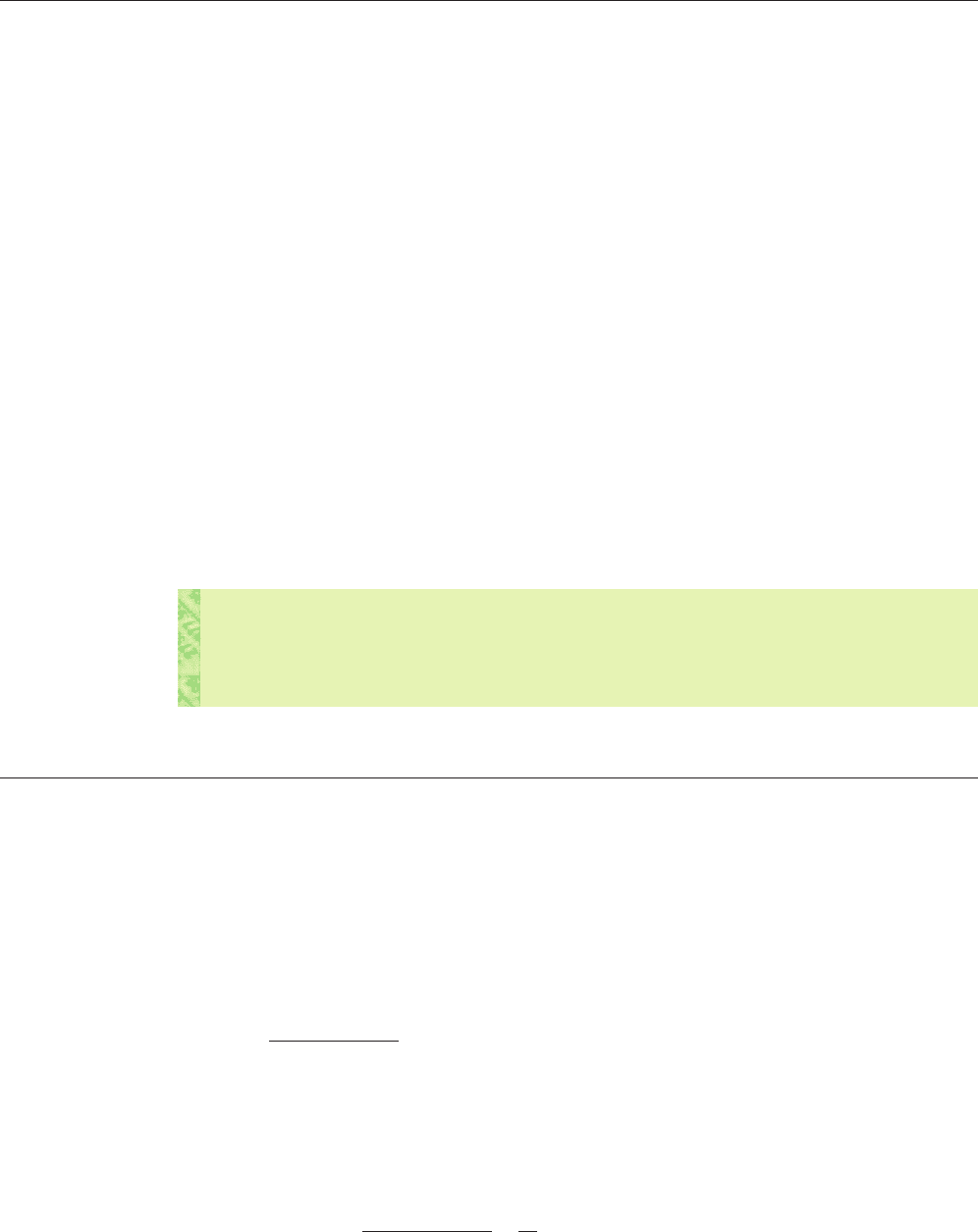
.
Chapter 19 Does capital structure really matter? 519
The operation of the arbitrage process requires that corporate and personal gearing are
perfect substitutes in a perfect capital market. The Nogear/Higear example showed
how individual investors could replicate corporate gearing to unwind any transitory
premium in the share price of a geared company. Much criticism of MM centres on the
perfect capital market assumptions and hence the extent to which the arbitrage process
can be expected to operate in practice.
In reality, brokerage fees discriminate against small investors, and other transaction
costs limit the gains from arbitrage. Moreover, if companies can borrow at lower rates
than individuals, investors may prefer the equity of geared companies as vehicles for
obtaining benefits otherwise denied to them. It is well known that, for reasons of size,
security and convenience, large firms can borrow at lower rates than small firms and
individuals. In addition, some major UK investors (e.g. pension funds) face restric-
tions on their borrowing powers, limiting their scope for home-made gearing. Finally,
whereas the shareholders in a geared firm have the protection of limited liability, per-
sonal borrowers enjoy no such protection in the event of bankruptcy.
Some authors suggest that such imperfections may foster investor demand for the
equity of geared companies. However, to sustain this argument, we would need to
produce evidence that relatively (but safely) geared companies are more attractively
rated by the market. There is little evidence that such firms sell at relatively high P:E
ratios. Indeed, UK investment trust companies, which invest in equities, often using
substantial borrowed capital, typically sell at significant discounts to their net asset
values – discounts far higher than can be plausibly explained by the transactions costs
that would be incurred in liquidating their portfolios.
19.5 MM WITH CORPORATE INCOME TAX
The analysis of MM’s three propositions in Section 19.3 is a theoretical exercise, designed
to isolate the key variables relating company value and gearing. This only becomes oper-
ational when ‘real-world’ complications are introduced. Perhaps the most important of
these is corporate taxation. In most economies, corporate interest charges are tax-
allowable, providing an incentive for companies to gear their capital structures. In a
taxed world, the MM conclusions change significantly.
Because Corporation Tax is applied to earnings after deducting interest charges, the
value of a geared company’s shares is the capitalised value of the after-tax earnings
stream (net income), i.e.
where is the return required by shareholders, allowing for financial risk, and T is
the rate of tax on corporate profits.
Assuming that the book and market values of debt capital coincide so that
the cost of debt, equates to the coupon rate, i, the value of debt is the discounted
interest stream, i.e. The value of the whole company is thus:
V
o
V
S
V
B
1E iB211 T2
k
eg
iB
i
V
B
iB>i.
k
d
,
1B V
B
2,
k
eg
V
S
1E iB211 T2
k
eg
1E iB211 T2:
Self-assessment activity 19.2
What factors restrict the ability of investors to arbitrage in the way envisaged by MM?
(Answer in Appendix A at the back of the book)
19.4 DOES IT WORK? IMPEDIMENTS TO ARBITRAGE
CFAI_C19.QXD 10/26/05 5:22 PM Page 519
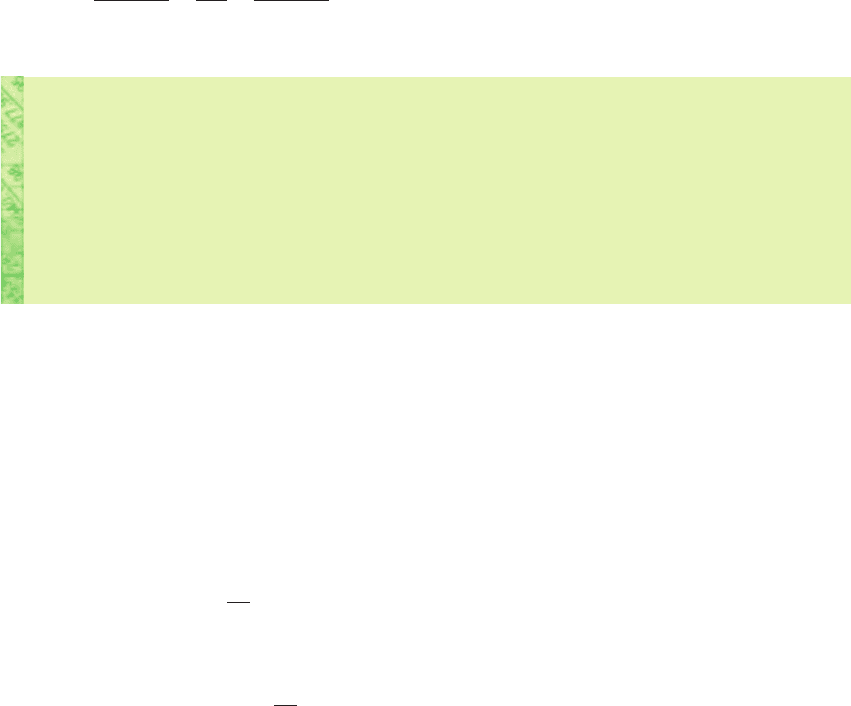
.
This is a highly significant result. The expression for the value of the geared com-
pany comprises the value of an equivalent ungeared company, plus a premium
derived by discounting to perpetuity the stream of tax savings that can be claimed so
long as the company has sufficient taxable capacity, i.e. if The introduction of
this second term, TB, the discounted value of future tax savings, or the tax shield, is a
major modification of MM’s Proposition I, as shown in Figure 19.2.
The company value profile now rises continuously with gearing. Proposition II also
needs modification. With no corporate tax, this stated that the shareholders in a geared
company require a return, of:
However, in a taxed world, the return required by shareholders becomes:
The return required by the geared company’s shareholders is now the cost of equity
in an identical ungeared company plus a financial risk premium related to the corpo-
rate tax rate and the debt/equity ratio.
The premium for financial risk required by shareholders is lower in this version owing
to the tax deductibility of debt interest, making the debt interest burden less onerous. This
relationship is also shown by Figure 19.2. It follows that if, at every level of gearing, the
cost of equity is lower and also the cost of debt itself is reduced by interest deductibility,
k
eg
k
eu
1k
eu
i211 T2
V
B
V
S
k
eg
k
eu
1k
eu
k
id
2
V
B
V
S
k
eg
,
E 7 iB.
V
u
,
520 Part V Strategic financial decisions
It can be shown that geared companies will sell at a premium over equivalent
ungeared companies because of the benefits of tax-allowable debt interest. The post-
tax annual expected earnings stream, comprises the earnings attributable to share-
holders plus the debt interest:
This simplifies to:
This second expression is very useful: the first element is the net income that the
shareholders in an equivalent ungeared company would receive, while the second
element is the annual tax benefit afforded by debt interest relief. The total value of the
geared company, is found by capitalising the first element at the cost of equity cap-
ital applicable to an ungeared company while the second is capitalised at the cost
of debt, which we have assumed equals the nominal rate of interest, i:
V
g
E11 T2
k
eu
TiB
i
E11 T2
k
eu
TB V
u
TB
1k
eu
2,
V
g
,
E
T
E11 T2 TiB
E
T
1E iB211 T2 iB
E
T
,
tax shield
The tax savings achieved by
setting tax-allowable expenses
such as interest payments
against profits
Self-assessment activity 19.3
What are the respective values of geared and ungeared firms if:
■ Earnings £100 m before tax
■ Tax rate 30%
■
■
The geared firm borrows
£200 m?
(Answer in Appendix A at the back of the book)
k
eu
15%
CFAI_C19.QXD 10/26/05 5:22 PM Page 520
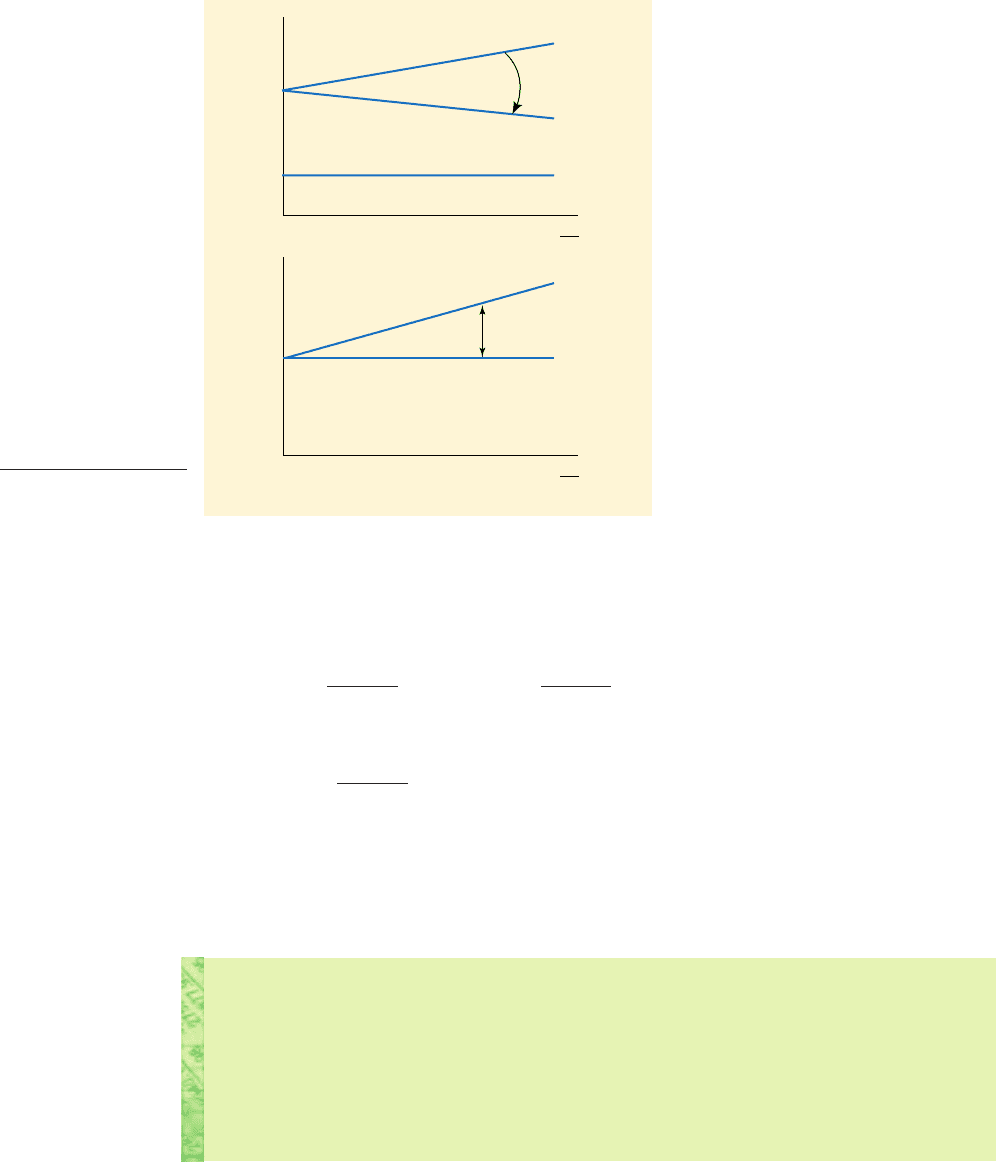
.
Chapter 19 Does capital structure really matter? 521
the WACC is lower at all gearing ratios, and declines as gearing increases. Figure 19.2
shows the resultant pivoting in the profile.
The tax advantage of debt financing is incorporated in the revised equation for the
WACC:
This can also be written as:
Clearly, there are significant advantages from gearing, with the implication that
companies should gear up until debt provides almost 100 per cent of its financing.
However, this does not seem plausible. Surely there are practical, ‘sensible’ limits to
company gearing, given the risks involved? More of this later!
k
o
k
eu
c1
T V
B
V
S
V
B
d
k
o
ck
eg
V
S
V
S
V
B
d ci11 T2
V
S
V
S
V
B
d
k
o
1k
o
2
Self-assessment activity 19.4
Compare the overall required return in geared and ungeared firms if:
■
■
■
The geared firm has borrowed
£200 m
at 7% interest, and has issued equity of £400 m.
(Answer in Appendix A at the back of the book)
Tax rate 30%
k
eu
15%
k
eg
k
eu
k
o
k
d
=
i
(1 – T)
0
V
B
V
S
Cost of capital
V
u
0
V
B
V
S
Company value
V
g
=
V
u
+
TB
TB
V
u
Figure 19.2
The MM thesis with
corporate income tax
■ Example of the impact of corporate taxation
It is now helpful to demonstrate ‘with-tax’ relationships using the examples of Nogear
and Higear. Recall that both companies had E of million and their equilibrium mar-
ket values were million under the ‘no-tax’ version of the MM thesis. After taxation,£5
£1
CFAI_C19.QXD 10/26/05 5:22 PM Page 521

.
522 Part V Strategic financial decisions
shareholder earnings in Nogear fall to With 30 per cent Corporate Tax, net
income is Capitalised at 20 per cent, the value of the
ungeared company is:
In the case of Higear, net income for shareholders is given by taxable earnings of
less the tax charge of to yield net income of:
This might be capitalised at the geared cost of equity and added to the value of debt
to yield the overall company value. However, there is a circular problem here, since
the calculation of the market value of the shares, derives from the calculation of
which itself depends on A remedy for this problem is to use the expression
encountered above. This yields:
It is useful also to cross-check on the components of and the return required by
Higear’s shareholders. If and the value of debt is million, the value
of Higear’s equity must be Using the revised expression
for the return required by the shareholders of a geared company, we find:
The geared company clearly has a greater market value – it is worth more due to
the value of the tax shield. The size of this tax shield depends on the gearing ratio, the
rate of taxation and the taxable capacity of the enterprise. Since gearing has raised
company value, the earlier conclusion, that the benefits of gearing are illusory, must be
modified. The reason is that the stakeholders of Higear benefit at the expense of the
taxpayer due to the tax deductibility of debt interest. (Whether this is desirable or not
in a wider context depends on the value of the forgone tax revenues in their alterna-
tive use, which is an issue for welfare economists.)
In its tax-adjusted form, the MM thesis looks rather more like the traditional version,
in so far as the WACC declines over some range of gearing. However, the benefits from
gearing clearly derive from the tax system, rather than from the apparent failure of the
shareholders to respond fully to financial risk by seeking higher returns. We will discov-
er that the similarity becomes even closer when we allow for financial distress. Before
doing this, we will show how the MM approach can be integrated with the CAPM.
120% 2.5%2 22.5%
20% 120% 10% 211 30%2
£1 m
£2.8 m
k
eg
k
eu
1k
eu
i211 T2
V
B
V
S
1£3.80 m £1 m2 £2.80 m.
£1V
g
£3.80 m,
V
g
V
g
V
u
TB £3.50 m 130% £1 m2 1£3.50 m £0.30 m2 £3.80 m
V
g
V
u
TB
V
S
.
k
eg
,V
S
,
1£0.9 m 0.72 £0.63 m
NI 1E iB211 T2 3£1 m 110% £1 m2411 30% 2
T1E iB21E iB2
V
u
£1 m11 30% 2
k
eu
£0.70 m
0.2
£3.50 m
£1 m11 30% 2 £0.70 m.
£1 m11 T2.
19.6 CAPITAL STRUCTURE THEORY AND THE CAPM
A feature of MM’s initial model was the classification of firms into ‘homogeneous risk
classes’ as a way of controlling for inherent operating or business risk. The modern dis-
tinction between systematic and specific risk makes this device unnecessary, as relevant
business risk is expressed by the Beta. The key point is that gearing introduces addi-
tional risk so that shareholders require additional compensation. Whereas in an ungeared
firm the cost of equity is
k
eu
R
f
b
u
1ER
m
R
f
2,
CFAI_C19.QXD 10/26/05 5:22 PM Page 522

.
Chapter 19 Does capital structure really matter? 523
in a geared firm this becomes
with
and
Clearly, gearing increases the equity Beta. It is a relatively simple task to integrate
the MM analysis with the CAPM. This was first performed by Hamada (1969), who
demonstrated that the required return on the equity of a geared firm in a CAPM
framework is:
where is the Beta applicable to the earnings of an ungeared company, or the pure
equity Beta. Multiplying out, we derive:
This looks unwieldy, but is a useful vehicle for making the distinction between
business and financial risk. The Betas recorded by the London Business School, are
geared equity Betas, incorporating elements of both types of risk. Given that and using
Hamada’s revised CAPM expression, the geared Beta, , is:
The ungeared equity Beta is therefore:
This can also be written as:
The shareholders of a geared company seek compensation for two separate types
of risk – the underlying or basic risk of the business activity, and also for financial
risk. The rewards for bearing these two forms of risk are the respective premiums for
business risk and for gearing.
■ Higear and Nogear: separating the risk premiums
To explore this distinction, consider again the example of Nogear and Higear. Assume
that the ungeared Beta applicable to this risk class is 1.11, the risk-free return is 10 per
cent, the return expected on the market portfolio is 19 per cent and the corporate tax
rate is 30 per cent. Recall that when we last encountered these companies (see Section
19.5) their respective values were:
V
S
1£3.80 m £1 m2 £2.80 m
V
B
£1 m
Higear: V
g
V
u
TB 1£3.50 m £0.30 m2 £3.80 m
Nogear: V
u
V
S
£3.50
b
u
b
g
c
V
S
V
S
V
B
11 T2
d
b
u
b
g
c1
V
B
11 T2
V
S
d
b
g
b
u
c1
V
B
11 T2
V
S
d
k
eg
R
f
b
g
1ER
m
R
f
2
b
g
k
eg
R
f
b
u
1ER
n
R
f
2 1ER
m
R
f
2 b
u
c
V
B
11 T2
V
S
d
b
u
k
eg
R
f
1ER
m
R
f
2 b
u
c1
V
B
11 T2
V
S
d
k
eu
7 k
e
.
b
g
7 b
u
k
eg
R
f
b
g
1ER
m
R
f
2
CFAI_C19.QXD 10/26/05 5:22 PM Page 523
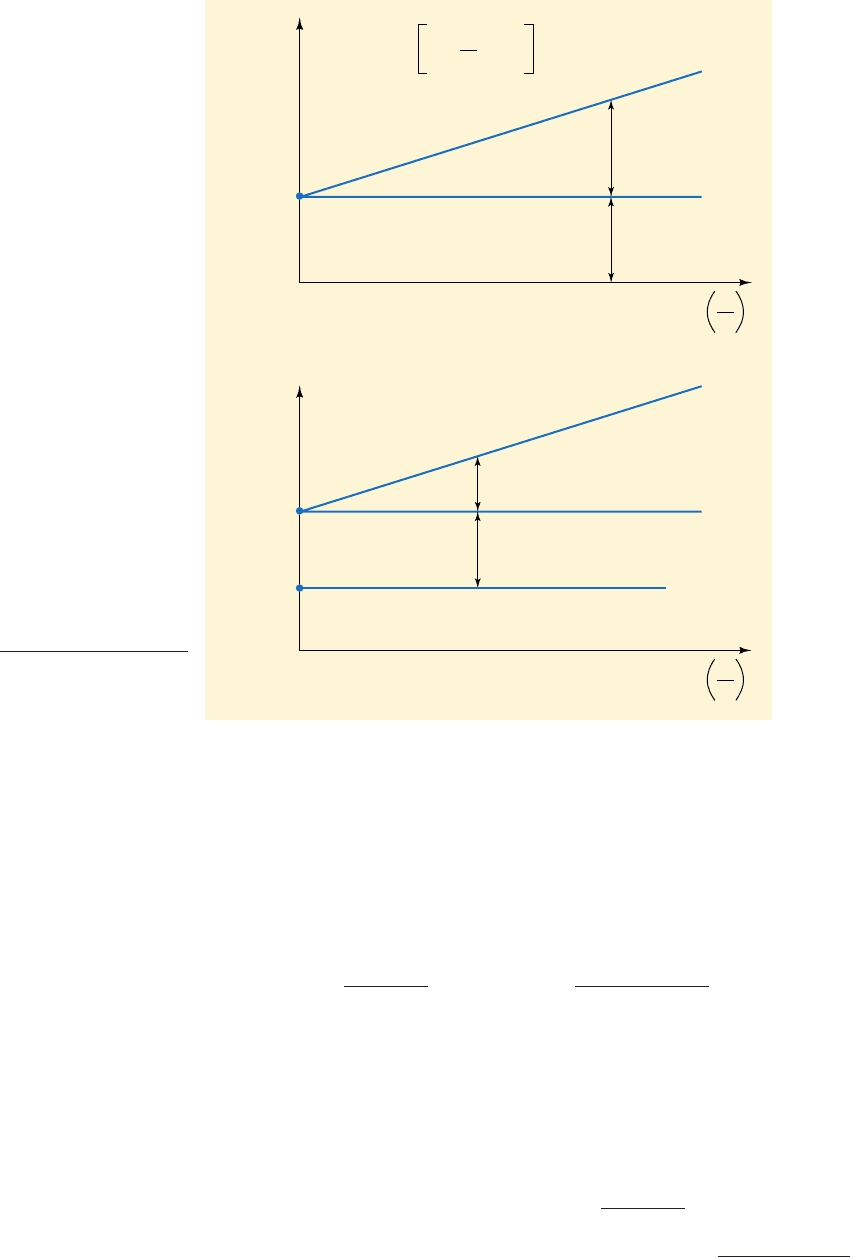
.
524 Part V Strategic financial decisions
First, we can verify the return required by Nogear’s shareholders. This is:
Second, we can analyse the composition of the return required by Higear’s share-
holders. To find the overall return they seek, we need to know the geared Beta. This is
given by:
For the return required by Higear’s shareholders is:
Analysing the cost of equity for Higear into its components, we find:
110% 10% 2.5% 2 22.5%
10% 1.11 319% 10% 4 319% 10% 4 1.11
£1 m11 30% 2
£2.80 m
R
f
b
u
3ER
m
R
f
4 3ER
m
R
f
4b
u
V
B
11 T2
V
S
k
eg
Risk-free rate Business risk premium Financial risk premium
110% 12.5%2 22.5%
k
eg
R
f
b
g
3ER
m
R
f
4 10% 1.3875 319% 10% 4
b
g
1.3875,
b
g
b
u
c1
V
B
11 T2
V
S
d 1.11 c1
£1 m
11 30% 2
£2.80 m
d 1.3875
10% 1.11319% 10% 4 110% 10% 2 20%
k
eu
R
f
b
u
3ER
m
R
f
4
Beta
b
u
b
g
b
u
Impact of financial
risk
Impact of activity,
or business risk
V
B
V
S
V
B
V
S
Gearing
0
b
g
= b
u
1 + (1−T)
Required
return
b
u
R
f
k
eg
k
eu
Premium for
financial risk
Required return
on equity in a
geared firm
Premium for
business risk
Risk-free rate
Ungeared firm
cost of equity
V
B
V
S
Gearing
0
Figure 19.3
Business and financial
risk premia and the
required return
CFAI_C19.QXD 10/26/05 5:22 PM Page 524
